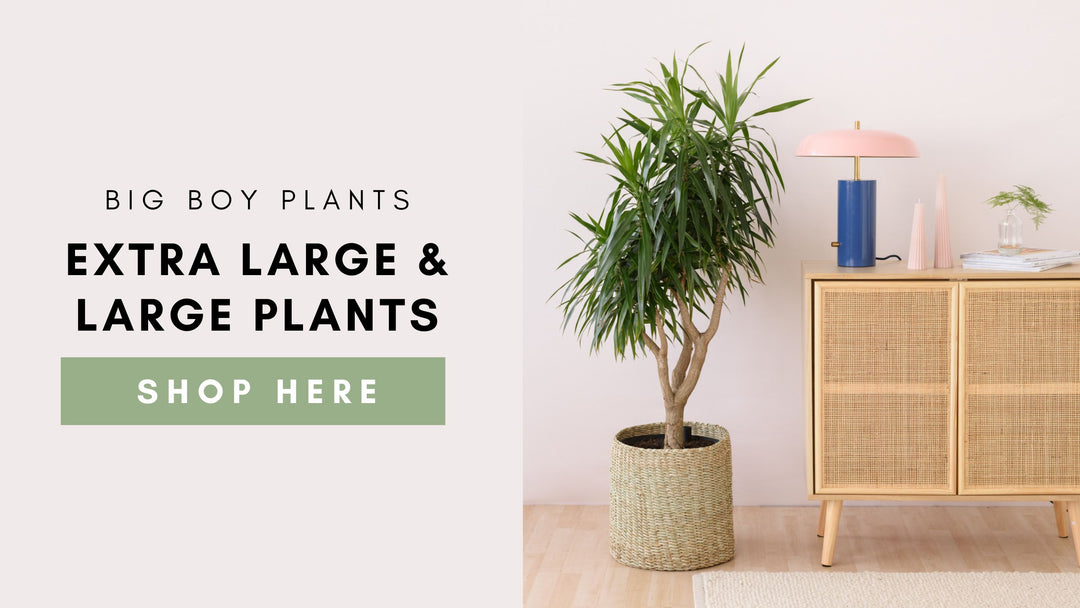Mini Monstera Care Instructions
Mini Monstera
Scientific name: Rhaphidophora tetrasperma
Synonyms: Mini monstera
Rhaphidophora tetrasperma has soared in popularity this year and perhaps the main reason for this is how striking it looks, combined with how easy it is to grow; no diva plant here! As its native habitats of Thailand and Malaysia suggest (being found in a range of rainforest conditions), this plant is adaptable and happy in a number of environments.
Note: Please be aware that the plant may be harmful if eaten - keep out of reach of animals and children.

Common Symptoms
- Scorched foliage or pale leaves: Your plant is getting too much direct light. Mini monsteras have less of a waxy layer than their namesake (the monstera deliciosa) so move to somewhere more shaded.
- Spots/patches on leaves: There are potentially a few reasons here; if the spots are brown and soft the likely cause is over-watering. Lighter coloured patches can signal shock from cold water; tepid (room temperature) water is always best.
- Brown edges on foliage: A number of issues can manifest themselves in this way. The most common issue is dry air; if your houseplant is near a heat source, air conditioner or draught. Inconsistent watering is another potential problem.
- New leaves are small: As a climbing houseplant, you might need to trim your rhaphidophora tetrasperma when the vines get particularly long to keep the plant healthy. If the leaves are continuously small, your plant might not be getting enough light/humidity.
- No splits in leaves: One of the most distinctive features of this plant are its fenestrations (splits in the leaves), which is also what makes it visually similar to a monstera deliciosa. Low light conditions or lack of support from a pole or trellis can cause a reduction in splits, so move somewhere brighter/add a support.
- Yellowing leaves: A natural part of the life cycle, older leaves will yellow and drop. However, if multiple leaves drop suddenly, it might be due to cold draughts or prolonged overwatering.
- Pests: Incorrect care and lack of humidity are the main reasons pests may appear, red spider mite, thrips and aphids are ones to be particularly aware of in warm, dry conditions. Keeping the humidity up is the main deterrent, but if pests are present, this houseplant can be treated with insecticidal soap or neem oil. Repeat weekly and keep plant in isolation until completely pest-free.
Care Instructions
- Origin: Native to Thailand and Malaysia in a variety of rainforest conditions; from dry to wet.
- Height: 1.5 metres height / 1 metre spread.
- Light: Ideally, bright but indirect filtered light, can cope with lower light too. Protect from harsh sun which can scorch the foliage.
- Water: Keep soil moist using water at room temperature, but do not allow the plant to sit in water. Allow the plant to dry out between watering, during the dormancy - autumn, winter - as too much water can put the plant under stress.
- Humidity: Moderate humidity and regular misting will be beneficial. A good level of humidity contributes to healthy growth and larger leaves on your Rhaphidophora tetrasperma.
- Temperature: The mini monstera will grow happily in temperatures of 12-27°C, try to avoid sudden drops in temperature and be wary of draughts and open windows.
- Soil: A free-draining organic potting mix which allows breathability for the roots is ideal, and this houseplant also grows extremely well in coco chips or orchid bark.
- Fertilizer: Rhaphidophora tetrasperma enjoy regular fertilising; twice a month during the growing season (Spring and Summer). Use a balanced fertiliser at half the recommended dilution level for this plant (as it’s a relatively fast grower). If the potting medium is particularly dry, water lightly before feeding to avoid fertiliser burning the roots.
- Repotting: These plants can grow pretty quickly so be prepared to do some occasional repotting, the ideal time to re-pot is early Spring when the plant had a period of active growth ahead. Roots ‘circling’ around the bottom of the nursery pot is an indication that repotting is needed. Increase pot size by just a few centimetres at this stage, no drastic jumps.
- Pruning: Mini monsteras appreciate being pruned when their stems get particularly long. You want to use a sterile blade and trim a few centimetres below a leaf node that ideally has an aerial root underneath it (bobbly bit that looks like a root forming). Then… propagate! (see below)
- Propagation: There are two options here. You can place the cuttings in water to root for a few weeks or put directly into coco chips (for lots of aeration). If in water, wait until the roots are a few centimetres long before potting on. If you pot directly into coco chips, be sure to water regularly.
If in stock, shop for Mini Monstera (Rhaphidophora tetrasperma) here.



